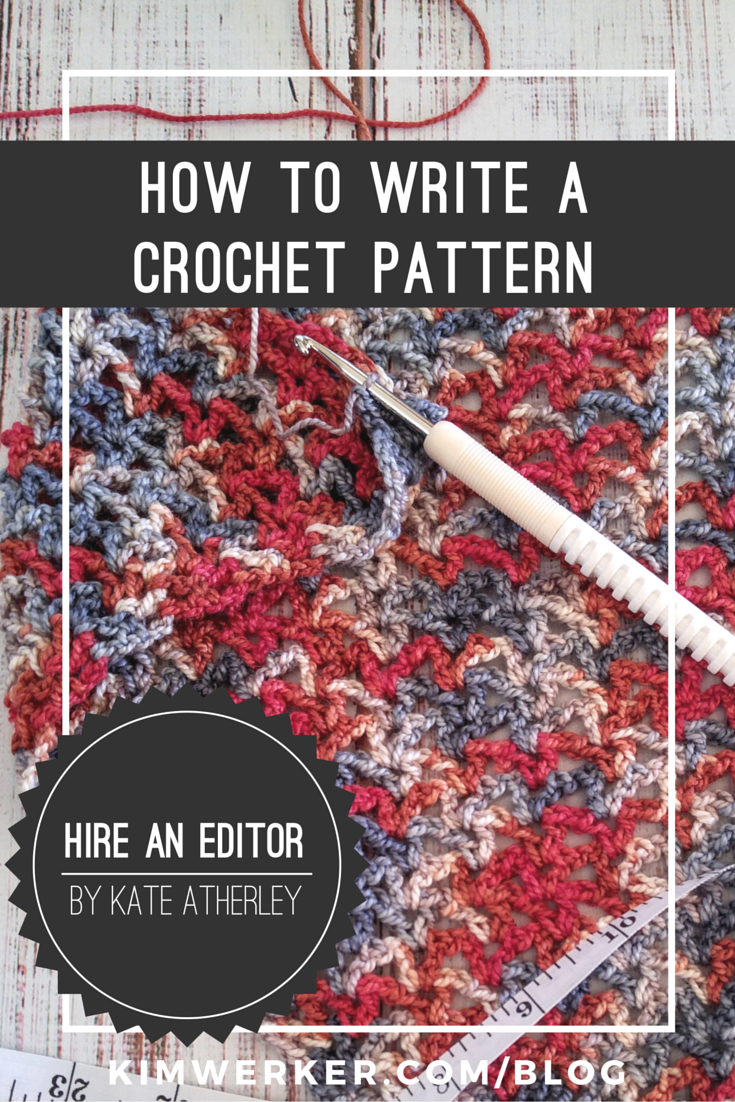Your cart is currently empty!
How to Write a Crochet Pattern: Kate Atherley on the Value of Professional Editing

This guest post by technical editor Kate Atherley is part of an in-depth series on how to write an outstanding crochet pattern. In addition to designing her own knitwear patterns and serving as the lead tech editor at Knitty.com, Kate has written an incredibly useful book called Pattern Writing for Knit Designers. She and I have spent considerable time discussing the particular challenges crochet presents when it comes to writing clear, enjoyable patterns.
This is the 6th post in a 7 part series on how to write an outstanding crochet pattern. The rest of the series can be found here: part 1, part 2, part 3, part 4, part 5, part 6, part 7. There are five posts from me, and two fabulous guest posts from Kate Atherly.Â
 
A final step before you release your pattern into the wild is to have it tech edited. No matter how careful you are, no matter how good you are at spelling and grammar and math, your pattern needs to be looked over by someone else who knows exactly what to look for to ensure your pattern is the best it can be.
Typos do happen, and it’s remarkably difficult to proofread your own work. You just can’t read your own writing closely enough – you see what you want to see, you automatically fill in any gaps because you know what is supposed to be there. (Indeed, it’s actually pretty difficult to proofread anything… we tend to read quickly, we let our brain fill in what we know.)
Tech editing a pattern is about more than just checking the spelling and grammar – it’s also about logic and clarity and numbers.
Even the most experienced designers use an editor – in fact, the most experienced designers rely very heavily on editors. Specifically, technical editors are people (typically very detail-oriented and numerically inclined) who read through a pattern to make sure it works. There are two aspects to it: does the pattern work, and can it be worked? That is, do the instructions produce the thing that they’re supposed to: if you work the pattern stitch with the yarn stated at the gauge stated, does the scarf look like the thing in the picture? Is it the same size as listed in the pattern? And can it be worked: are the instructions complete and accurate and clear?
A technical editor checks to make sure you’ve included all the key information: yarn and hook details, size and measurement information, and complete instructions, from first chain through to finishing touches. She also checks to make sure the numbers are right. (I recently typed up a hat pattern that, due to a slip on the keyboard, told the crocheter to work a chain of 6000 stitches to start. Oops.) A technical editor can also make suggestions to improve the pattern. I rely on a technical editor to help me figure out if my explanations are clear. The instructions I write will always be clear to me because I wrote them and I know what they mean! I recently ran into trouble with instructions for creating a tassel for the ends of a scarf. I wrote that you should make sure you have enough yarn left to make tassels when you finish the scarf, but I hadn’t given any information about how much yarn was required for a tassel. My editor pointed out that without that information, my instructions weren’t helpful. Good point!
My technical editor also knows to check spelling: being a Canadian of UK origin who works for many US companies, I am hugely inconsistent about the “u†in colour!
And if your editor finds a mistake (or two or three), don’t feel bad! Rejoice! Better that your editor find the mistakes than someone who is trying to follow the pattern. Approach the edits as a way to improve your work going forward. For example, after my tassel experience I wrote up a complete and clear description of how to create tassels and how much yarn they require, and I’ve saved that for use in future patterns.
Any set of instructions needs to be checked. Cookbooks have editors, too! After all, it’s just as bad to start a hat with a chain of 6000 stitches as it would be to use 1 1/2 Tbsp of salt in a cookie recipe, when it should have read tsp.
Thank you, Kate! And a final note to say that both Kate and I work as professional editors (Kate of the technical variety, me of the prose variety), and we both hire someone else to edit our patterns and ebooks. Being great at editing doesn’t mean you can do a good job editing your own work. True story: Even though I wrote this post, my tech editor had to remind me to put a note about using American crochet terms in my pattern. She used a smirking emoticon and reminded me of what I wrote, too. Busted.
Look for the final part of the series, and the Resa Shawlette pattern, next week!
This has been the 6th post in a multi-part series on how to write a top-notch crochet pattern. The previous post was all about The Images and creating a first impression. In the next post (and last post) we talk about Pulling It All Together and the big reveal, you can find that post right here.